#charles philippe larivière
Text
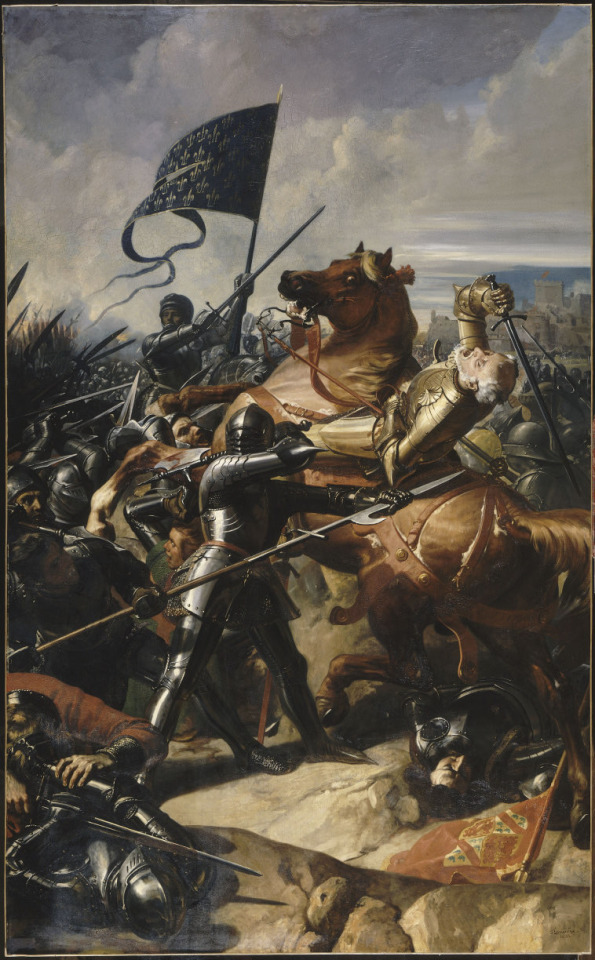
The Battle of Castillon, 17 July, 1453 by Charles-Philippe Larivière
Depicting the death of John Talbot, Earl of Shrewsbury falling from his wounded horse.
#charles philippe larivière#battle of castillon#art#john talbot earl of shrewsbury#john talbot#death#hundred years war#knights#medieval#middle ages#england#france#history#gascony#europe#european#armour#knight#battle#the hundred years war#earl of shrewsbury#galerie des batailles#palace of versailles#château de versailles
125 notes
·
View notes
Text

Battle of Castillon, July 17, 1453 (Charles-Philippe Larivière, 1839)
8 notes
·
View notes
Photo





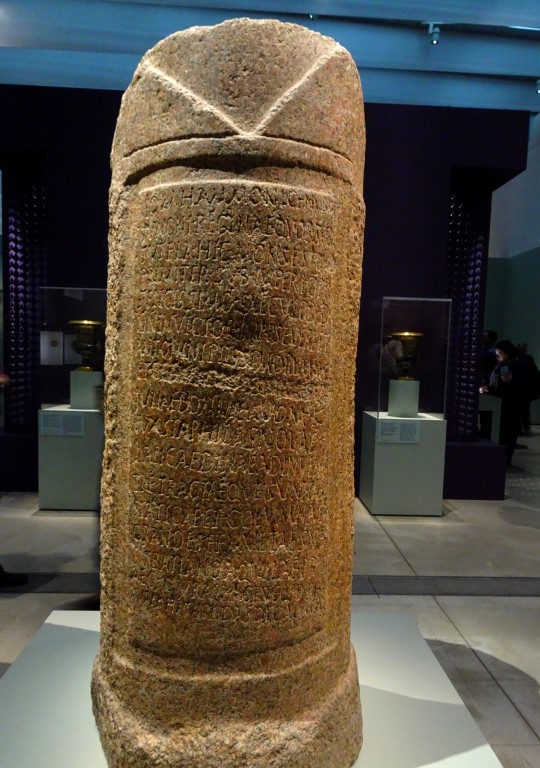
Au Louvre-Lens, il y avait une expo fort intéressante : “Champollion - La Voie des Hiéroglyphes”, sur l’homme, son époque, l’image de l’Egypte en Europe avant l’Egyptologie....
- gravure de Caroline Hulot d'après Louis-Léopold Boilly - “Le Libéral" et "L'Ultra”
- Charles-Philippe Larivière - "Portrait d'Ibrahim Pacha”
- Auguste Couder - "Méhémet Ali, Pacha d'Egypte”
- Charles de Steuben - “Portrait de François Arago”
- statue en tailleur du Chef du Trésor Iay - Moyen Empire 1900 av. J-C.
- autel de Philae, inscriptions romaines - 205 av. J-C.
#louvre-lens#expo#champollion#la voie des hiéroglyphes#égypte#égypte antique#égyptologie#archéologie#caroline hulot#caricature#libéral#ultra#louis-léopold boilly#charles-philippe larivière#auguste couder#couder#boilly#pacha#méhémet ali#charles steuben#steuben#ibrahim pacha#françois arago#iay#moyen empire#autel#philae#philaë#barbe#scribe
7 notes
·
View notes
Text

Battle of Castillon, July 17, 1453, Charles-Philippe Larivière, 1839
At the Battle of Castillon, the last major clash of the Hundred Years War, English forces under John Talbot, Earl of Shrewsbury, were cut to pieces by massed French artillery. Talbot and his son were both slain. This painting depicts the moment of Talbot's death (inaccurately--in fact he was unarmored, due to a vow he had taken several years before).
#art#art history#Charles-Philippe Lariviere#historical painting#Middle Ages#medieval#medieval history#Hundred Years War#French art#19th century art#oil on canvas#Versailles#Palace of Versailles#death tw
277 notes
·
View notes
Text
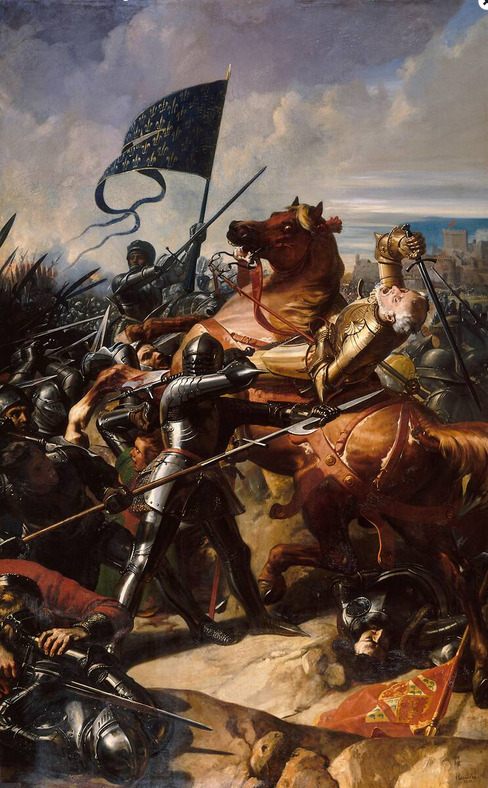
Bataille de Castillon, le 17 juillet 1453 (1839)
Charles-Philippe Larivière
70 notes
·
View notes
Text
La bataille de Montgisard (25 novembre 1177)
La bataille de Montgisard, Charles-Philippe Larivière (1798-1876)
Nous sommes en l’an de grâce 1177, en cette fin de XIIe siècle les réussites guerrières des Croisés en Terre Sainte ont permis d’établir plusieurs États féodaux dont le plus puissant est le Royaume de Jérusalem. La Cité Sainte est alors sous protection chrétienne. Cet ensemble de territoires conquis par les croisés et fonctionnant…

View On WordPress
2 notes
·
View notes
Photo

Charles Philippe Larivière (French, 1798-1876)
La Fugitive, Detail, 1869
Musée de Picardie, Amiens
#art#fine art#female portrait#brunette#classical art#charles philippe lariviere#western civilization#european art#black eyes#the fugitive#europe#europa#amiens#oil painting#female#woman#french#france#french art
46 notes
·
View notes
Text

The Battle of Montgisard, 1177
Charles-Philippe Larivière - 1842/44
12 notes
·
View notes
Text

"The Battle of Castillon (Hundred Years´ War, 1453) " by Charles-Philippe Larivière (1839)
0 notes
Text
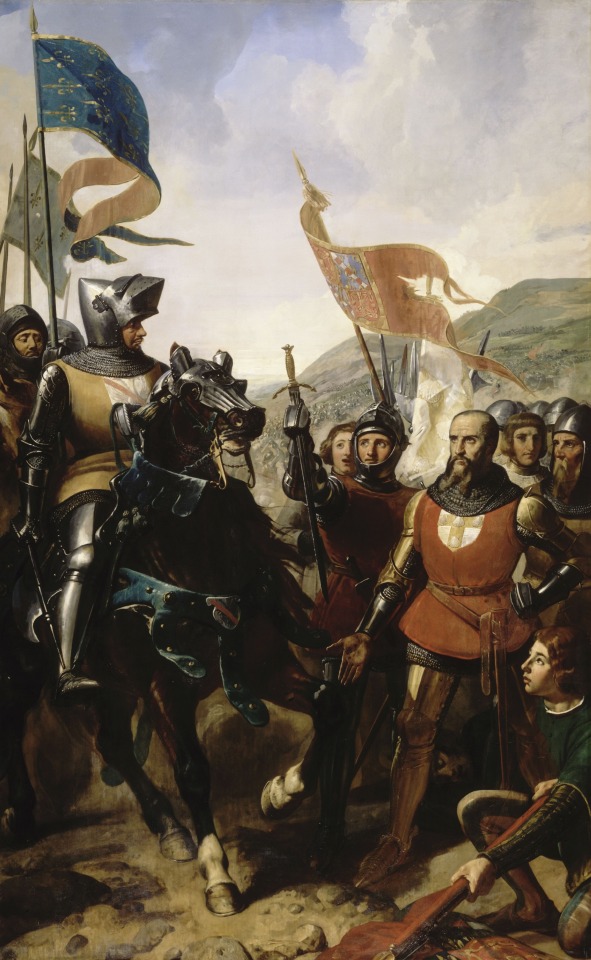
2024-01-16: A Random Event Occurs!
The calamity occurring at Goldfall is causing many people to flee from the underground dwarven city. Always looking for opportunities to recruit people to their cause, cult emissaries from Colburn have been dispatched to the east to tell refugees about how welcoming and safe the town of Colburn is.
Closer to Goldfall, some people are trying to organize relief efforts, but most are scared away by the threat of potential magical contagion and Colburn is expected to soon see a surge in refugees.
-------------
Image is the Battle of Cocherel, 16 May 1364 by Charles-Philippe Larivière. I originally found the image on a cool post about the logistics of building fantasy armies by Toni Šušnjar
0 notes
Photo

Em 1177, o Reino de Jerusalém enfrentou duas grandes crises, uma interna e outra externa. Internamente, a questão envolvia quem sucederia o rei Balduíno IV, de dezesseis anos, que, como leproso, não produziria herdeiros. O candidato mais provável era o filho de sua irmã viúva e grávida, Sibila. Enquanto os nobres do reino procuravam um novo marido para Sibila, a situação se complicou com a chegada de Filipe da Alsácia que exigiu que ela se casasse com um de seus vassalos. Fugindo do pedido de Filipe, Balduíno procurou formar uma aliança com o Império Bizantino com o objetivo de atacar o Egito. Enquanto Balduíno e Filipe tramavam sobre o Egito, o líder dos aiúbidas, Saladino, começou a se preparar para atacar Jerusalém de sua base no Egito. Movendo-se com 27.000 homens, Saladino marchou para a Palestina. Embora não tivesse os números de Saladino, Balduíno mobilizou suas forças com o objetivo de montar uma defesa em Ascalon. Como ele era jovem e enfraquecido por sua doença, Balduíno deu o comando efetivo de suas forças a Reinaldo de Chatillon. Marchando com 375 cavaleiros, 80 Templários sob o comando de Odo de St. Amand e vários milhares de infantaria, Balduíno chegou à cidade e foi rapidamente bloqueado por um destacamento do exército de Saladino. Confiante de que Balduíno, com sua força menor, não tentaria interferir, Saladino moveu-se lentamente e saqueou as aldeias de Ramla, Lydda e Arsuf. Ao fazer isso, ele permitiu que seu exército se dispersasse por uma grande área. Em Ascalon, Balduíno e Reinaldo conseguiram escapar movendo-se ao longo da costa e marcharam sobre Saladino com o objetivo de interceptá-lo antes que ele chegasse a Jerusalém. Em 25 de novembro, eles encontraram Saladino em Montgisard, perto de Ramla. Pego de total surpresa, Saladino correu para reconcentrar seu exército para a batalha. Continua nos comentários _______ 📸A Batalha de Montgisard, 1177, por Charles Philippe Larivière _______ Fonte - Jean Richard: The Latin kingdom of Jerusalem. #Curitiba #idademedia #medieval #historia #cwb #history #MiddleAges #medievalworld #medievaltimes #montgisard #jerusalem #deusvult #historiamedieval https://www.instagram.com/p/ClYccxeuX6_/?igshid=NGJjMDIxMWI=
#curitiba#idademedia#medieval#historia#cwb#history#middleages#medievalworld#medievaltimes#montgisard#jerusalem#deusvult#historiamedieval
0 notes
Text
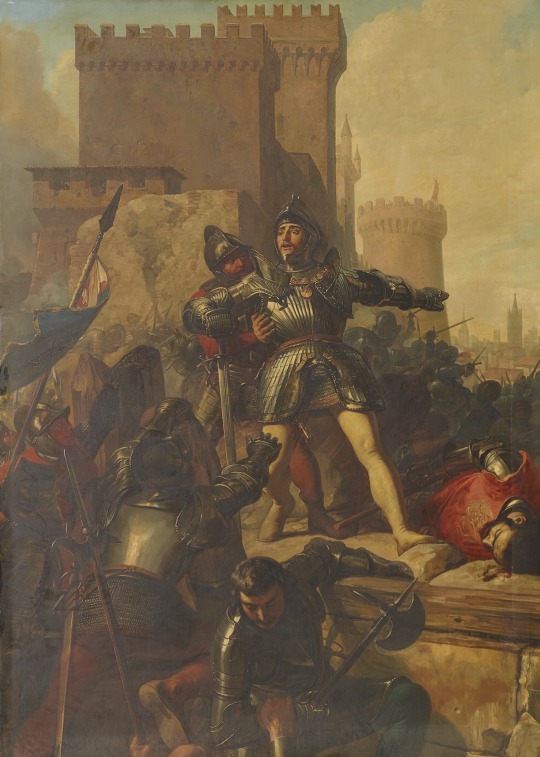
Prise de Brescia, 19 février 1512 by Charles-Philippe Larivière
#capture of brescia#siege#sack#brescia#gaston de foix#gaston of foix#kingdom of france#france#french#italian wars#italy#art#painting#charles-philippe larivière#history#europe#european#renaissance#middle ages#medieval#knights#knight#palace of versailles#versailles#château de versailles
29 notes
·
View notes
Photo

#Achilles Presents the Prize of Wisdom to Nestor During the Funeral Games#Charles-Philippe Larivière
1 note
·
View note
Photo

Louis-Eugène Larivière (1801-1823)
Nu académique d'homme avec le bras levé.
Collection privée
Louis-Eugène Larivière est un peintre français issu d'une prolifique famille d'artistes puisque il est le fils du bien nommé Charles Lepeintre (1735-1803), le beau-père du peintre Albert Maignan et l'oncle d'Étiennette Larivière-Maignan, elle-même pastelliste et portraitiste. Il est aussi le frère du peintre Charles-Philippe Larivière connu pour ses grandes fresques historiques et ses portrats de Maréchaux au musée de l'Histoire de France à Versailles. Peintre académique s'il en fut il signe avec cette œuvre, une des pièces les plus caractéristiques de ce que les impressionnistes appelleront avec dédain l 'art pompier.
Plus de Men Portraits gratuitement...
#louiseugenelariviere#nuacadémque#male nude#nu masculin#peintre français#xixe siècle#artpompier#francisrousseaublogs#frenchartist#france
44 notes
·
View notes
Text
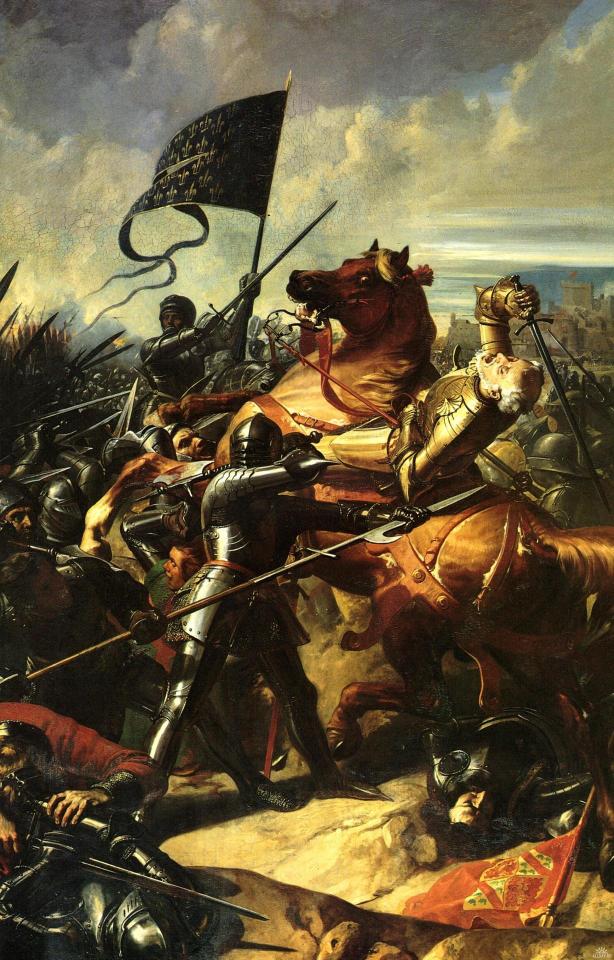
Charles-Philippe Larivière, The Battle of Castillon (Hundred Years´ War, 1453), 1839.
59 notes
·
View notes
Photo

🏴 ‘The Death of Shrewsbury at the Battle of Castillon’ by Charles-Philippe Larivière (19th Century). John Talbot, 1st Earl of Shrewsbury, was one of the most experienced and renowned English military commanders of the late stages of the Hundred Years War. Shrewsbury was known as the ‘English Achilles’ and the ‘Terror of the French.’ Shrewsbury was sent to France by King Henry VI to reverse English fortunes on the continent. His army met a French force at Castillon near Bordeaux on July 17, 1453. Shrewsbury’s horse was killed by French artillery and the Earl was pinned beneath it, allowing a French soldier to finish him off with a battle ax. The battle is considered the last of the Hundred Years War which had ravaged France for generations. England was already in a turmoil which would only grow worse with a weak king in Henry VI. Soon the civil war known as the Wars of the Roses would engulf the kingdom in an orgy of violence and bring to an end any serious efforts to restore former English possessions in France to the crown. https://www.instagram.com/p/CHwZvtLJOIj/?igshid=ke1iydazsgxa
5 notes
·
View notes